eBay is one of the biggest online marketplaces worldwide. You can bring your online store catalogue to eBay and start offering your brand directly on the marketplace. An omnichannel approach to selling can help your brand reach more customers in more places and drive sales.
To start selling on the marketplace, connect your online store to eBay through the Koongo app from the App Market. The connection process includes creating the Product and Product Remove feeds and syncing orders between your online store and eBay. After you connect your online store to eBay, your online catalogue appears on eBay, so that shoppers can order your goods directly on the marketplace.
The Koongo app is $24+ per month with a free month trial.
Requirements for selling on eBay
To sell on eBay via the Koongo app, you need to meet the following requirements:
- You will need to select and register your online store on one of the eBay websites in the United States, Australia, Austria, Canada, Czech Republic, Denmark, Finland, France, Germany, Italy, Ireland, the Netherlands, Poland, Spain, Switzerland, and the UK. Merchants in South Africa typically prefer to register their store in the UK or United States.
- Register an account on eBay and verify it following the instructions sent to your email.
- Comply with the eBay Business Policies.
- Configure your eBay account settings according to eBay policies.
- Your products have SKU and EAN/UPC assigned as product attributes. That is needed to connect your online store to eBay through the Koongo app. If you have not had these before, you can get them from GS1. Please follow the steps from the GS1 website.
Step 1. Creating the Product feed for eBay
The Product feed contains information about your products’ details and categories. Since eBay marketplace has its own categories, you need to adjust your products info during the feed setup so that your catalogue and eBay product details match.
To create the Product feed for eBay via the Koongo app:
1. From your store admin, go to Apps → App Market.
2. Find the Koongo app and click Install.
3. Click Open Koongo account. You will be redirected to your Koongo account.
4. In the menu on the left, navigate to Dashboard and near the Channels click Add New.
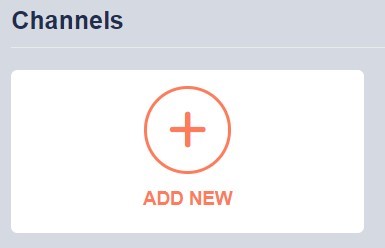
5. Choose eBay.
6. In the Market dropdown, select your country; in the Type dropdown, select Products, and in the Format dropdown — CSV.
7. Click Add Channel Profile.
8. Click the gear icon near the eBay channel to set up the Product feed:
![]()
9. The values for required attributes will be created automatically.
For a quick tip about each attribute, hover your mouse over the Show more link, or contact Koongo support.
10. Click Save.
11. Switch to the Category Mapping tab to set up categories. eBay uses their own categories in the product feed, so you need categories in your store to match eBay categories.
12. Click Add and then select the category you want to match. For example, Coffee. In the Set to Ebay Category, select the corresponding category:

For more details on categories mapping, follow the Koongo categories mapping instructions.
13. Click Save and Export.
14. Click API submission:
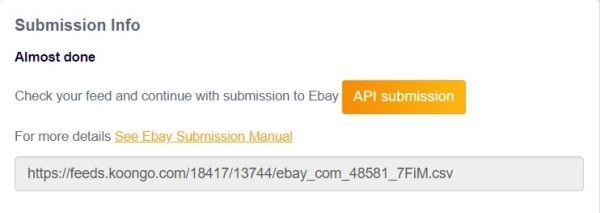
15. (optional) In case you need any help with setting up your feed, or you want to make sure everything is set up correctly, click Get Assistance.
16. In the Enable Feed Auto-Submit dropdown, choose Yes.
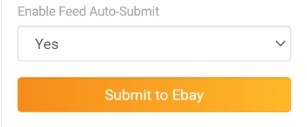
17. Click Connect eBay Account and connect your account.
That’s it. You’ve created the Product feed. Now you have to create the Remove feed.
Step 2. Creating the Product Remove feed for eBay
The Product Remove feed deletes a product from the marketplace when this product is deleted from your online store.
To create the Product Remove feed for eBay via the Koongo app:
1. From your store admin, go to Apps → My Apps.
2. Near the Koongo app, click Open.
3. You will be redirected to your Koongo account. In the menu on the left, navigate to Dashboard and near the Channels click Add New:

4. Choose eBay.
5. In the Market dropdown, select your country; in the Type dropdown, select Product remove, and in the Format dropdown — CSV.
6. Click Add Channel Profile.
7. Click API submission:

8. In the Enable Feed Auto Submit dropdown, choose Yes.
9. Click Save.
That’s it. You’ve created the Product Remove feed. Now you have to set up syncing orders.
Step 3. Synchronising orders between Netcash and eBay with the Koongo app
To make orders from eBay appear in your store admin, you need to synchronise them via the Koongo app.
Before you proceed with order syncing, make sure your current Koongo plan allows you to create the order synchronisation. To do so, in your Koongo account go to My plan and Pricing and in the Service Features section, check how many Order connections your current plan supports:
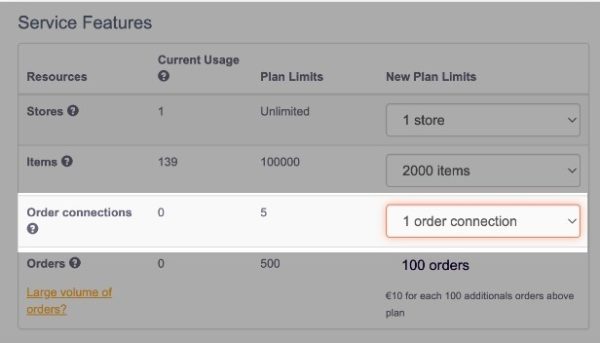
If you have reached your limits, you need to upgrade the plan. For this, select the desired number of order connections from the dropdown and click I agree with this plan to purchase a new plan.
To sync orders between Netcash Shop and eBay via the Koongo app:
1. From your store admin, go to Apps → My Apps.
2. Near the Koongo app, click Open.
3. From your Koongo account, click Orders in the menu on the left
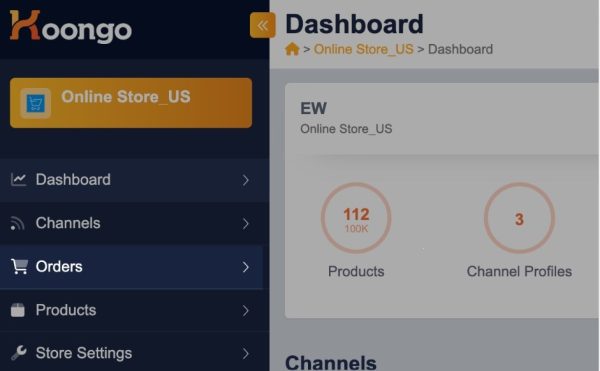
4. Switch to the Connections tab and select eBay.
5. In the Activate Order Synchronisation, choose Active:

6. Click Save.
That’s it. Now your product catalogue will appear on eBay where people can find your brand and purchase it directly from the marketplace.
Processing orders from eBay
When someone buys your product on eBay, a new order will appear in the My sales → Orders section in your store admin. You will get notification about a new order with an email or a push notification in the mobile app for iOS or Android.
Orders are synced between Netcash Shop and eBay accounts. That means, when you change the status of an order in your store admin and/or add a tracking number, this information is sent to eBay. And vice versa. As a result, you can manage the order processing both from your Netcash Shop or eBay admin.
You need to fulfil orders and ship them with the help of eBay or by yourself, as you usually would for any other Shop orders.